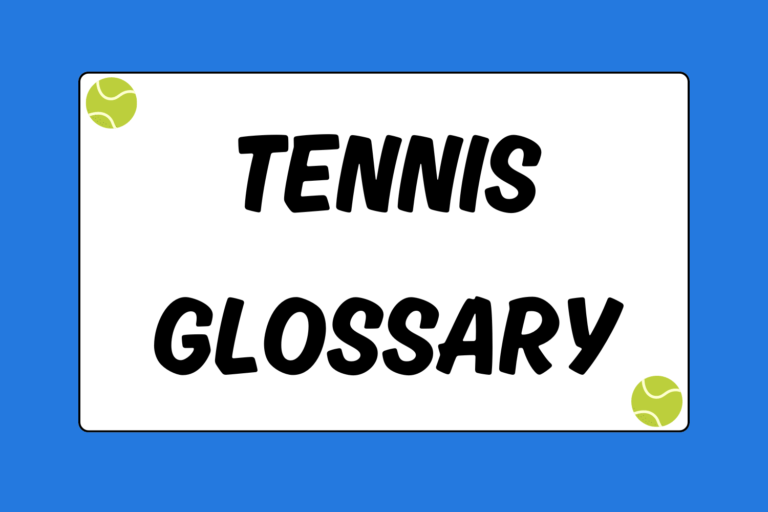During the beginning stages of tennis, you encountered both the physical and mental challenges of the sport. But you’re ready to take your play to the next level and tackle new aspects of the game now that you’ve learned how to form your own style of play, consistently keep the ball in play, and hit with different types of spin.
You can’t simply cruise through a match without a game plan if you want to be a successful tennis player. At the intermediate and higher levels, you need to understand different strategies and be able to adapt to your opponent. Even if you have all the tools and weapons to win a match, you need to be able to analyze your opponent and change your style of play as many times as is necessary to win a match.
Remember, you don’t get bonus points for winning with style or charisma. You have to be willing to grind out ugly points, find and exploit weaknesses in your opponent, and play to your own strengths. If it takes you a few games to realize your opponent is left-handed, you probably aren’t studying whether your opponent avoids charging the net or prefers to run around his backhand groundstrokes.
This guide outlines five strategies that will frustrate your opponent and help you win. Although there aren’t any surefire tactics to winning, incorporating these strategies will give you a mental edge and possibly cause your opponent to self-destruct.
“I’m not afraid of anyone, but sometimes I’m afraid of myself. The mental part is very important.”
Justine Henin
7-Time Grand Slam Champion
Five Lines of Attack
Incorporate the following five strategies into your game and you’ll become a more competitive player and win more matches.
1. Vary Your Shots
Don’t feel pressured to change your approach if you get off to a good start and are striking the ball well. Winning points is all that matters so don’t change your game plan or experiment with different shots just for the sake of doing so.
However, you might be in trouble if you notice that your opponent is starting to predict your shots and has caught on to your game. If this is the case, vary the spin, pace, or placement of the ball, and keep your opponent guessing. You want to control the points and prevent your opponent from establishing any sense of rhythm. If he isn’t dictating the points and cannot get comfortable, chances are you will emerge victorious.
2. Move Him if it Loses Him
Don’t sit back at the baseline and rally with your opponent if you notice that he likes to stay stationary and grind out points. Try hitting short balls that force the player to the net, and test his ability to volley. Or, move him from side to side and see if he can handle an exhausting match that requires conditioning.
Conversely, don’t test a player’s speed and determination if he likes to sprint and hustle around the court. Quick players often enjoy showing off their speed, so try to hit balls at their body or shots that force them to stay at the baseline. You can disrupt the opponent’s rhythm by forcing him out of his comfort zone and into a game he is not used to. This strategy might get the best of your opponent in the end, even if you lose the first few games or even the first set.
3. Exploit Weaknesses
Although this strategy may seem straightforward, it will unquestionably help you win matches. If your opponent struggles with backhand groundstrokes, continue to pound shots at his weaker wing and don’t relent. Try bringing your opponent to the net if he cannot consistently volley. Even if he runs around a few shots or hits some winners, your opponent will make mistakes and grow increasingly frustrated.
Try to keep your opponent off-balance by hitting a few shots to his strengths as well. He will notice that you’re picking on his vulnerabilities and may start to anticipate certain shots. However, he could grow tentative and struggle to react if you keep him guessing.
4. Keep the Ball Deep
Try to hit high-arching, topspin-heavy shots that land deep in the court and pin your opponent behind the baseline. It’s difficult to handle deep shots that bounce high, and players can become easily frustrated.
Most players, especially players that hit with pace, prefer to make contact with the ball when it’s located around hip-level and in front of their body. High-arching, deep shots with a lot of topspin can force your opponent out of his comfort zone and cause him to change his style of play. Take advantage of your opponent’s mistakes and try to hit a winner if he struggles to return the ball with much pace or depth.
5. Make Your First Serve
Admittedly, there are few better feelings in tennis than acing your opponent. A powerful first serve can carry you through a match and set up easy points. However, you should take some pace off your serve and focus on keeping the ball in play if you’re serving inconsistently.
Ideally, you want to make at least 60 percent of your first serves, but you should be able to maintain a steady lead if you can serve at an even higher percentage. Focus on varying the placement of your serve, and keeping your opponent guessing. Even if you serve at about 80 percent of your maximum strength, you’ll reduce errors and sustain a solid advantage on each service point. It’s highly unlikely that your opponent will tee off on your first serve and consistently hit return winners, so try to create an advantage by keeping the ball in play and reducing mistakes.
Blending Your Game
Improving your fundamentals will help you become a winning tennis player, but a majority of the game is played between the ears. You’ll notice dramatic improvements in your game if you are a mentally tough player that constantly analyzes the person on the other side of the net. Never stop evaluating your opponent’s game, and focus on winning points rather than style points.





